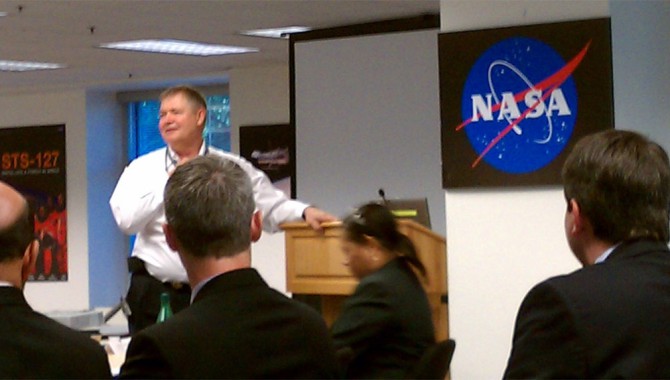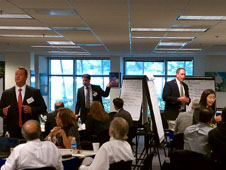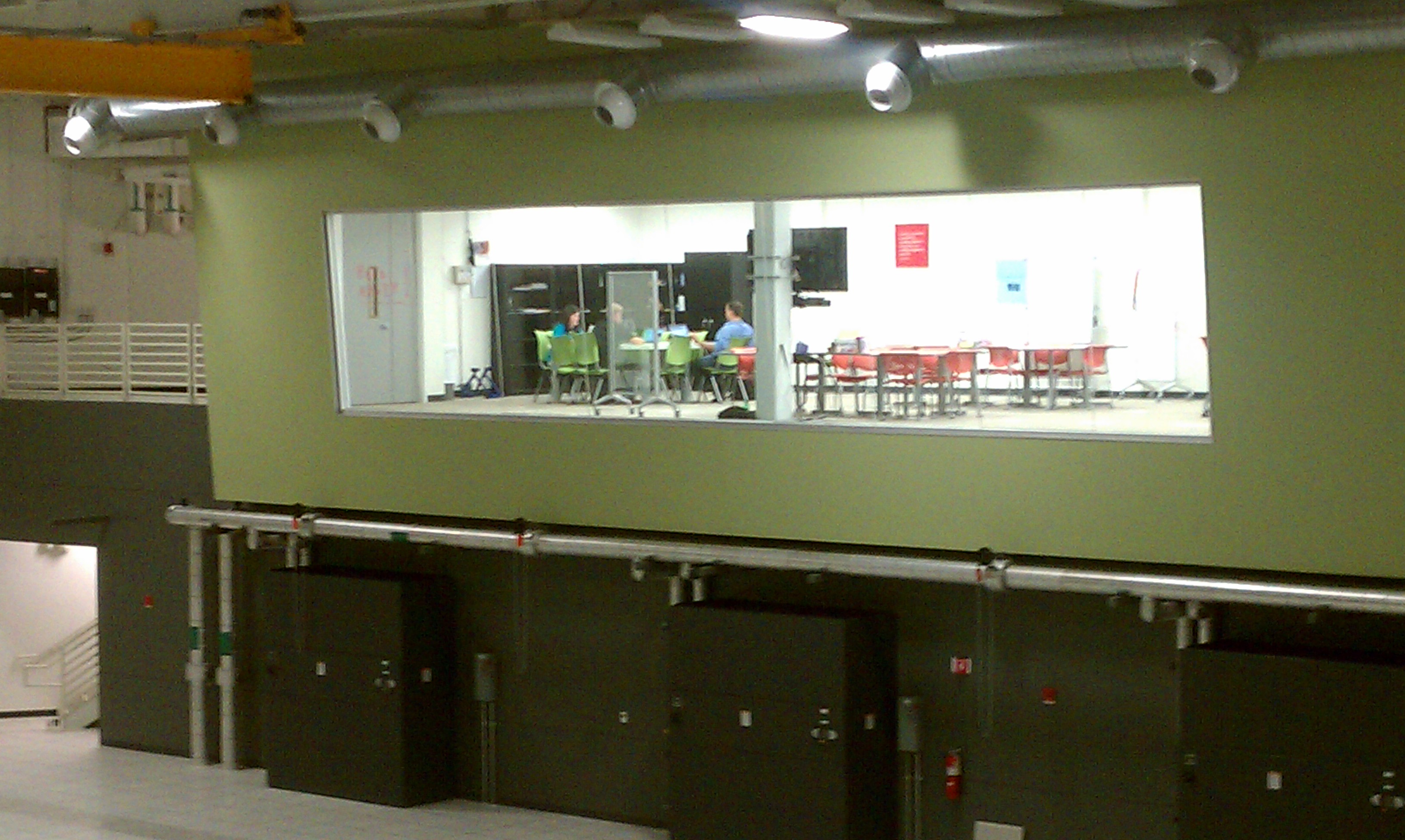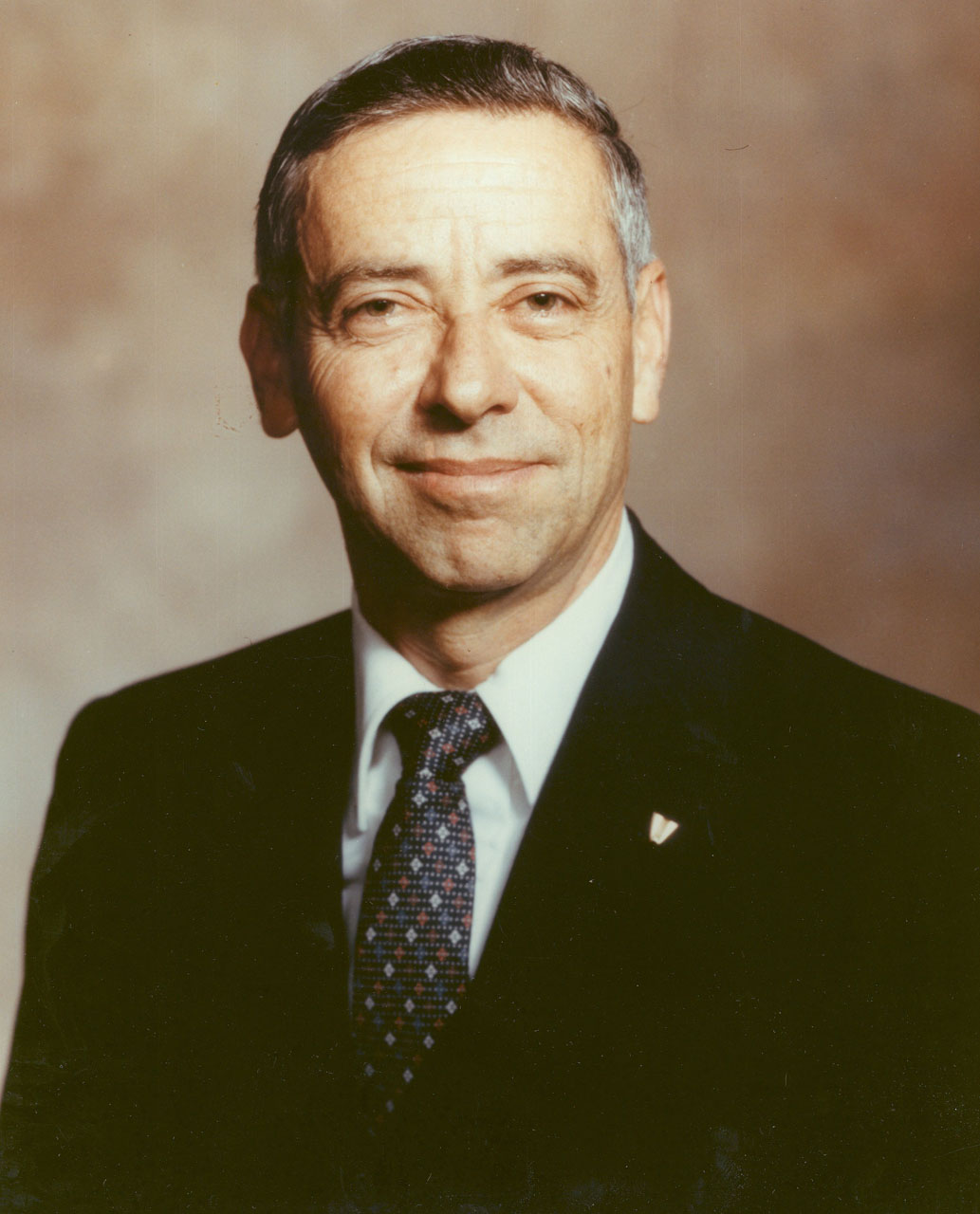
NASA Chief Engineer Mike Ryschkewitsch speaks to the graduates of the 2011 SELDP graduating class at NASA Headquarters on June 15, 2011. Photo Credit: NASA APPEL
July 20, 2011 Vol. 4, Issue 5
“If you’re not learning something, you’re probably not stretching yourself as an engineer,” NASA Administrator Charlie Bolden told the 2011 graduating class of the Systems Engineering Leadership Development Program (SELDP).

NASA Chief Engineer Mike Ryschkewitsch speaks to the graduates of the 2011 SELDP graduating class at NASA Headquarters on June 15, 2011.
Photo Credit: NASA APPEL
The 2011 SELDP class completed its yearlong program on June 15, 2011. In addition to completing a six-month rotational assignment at a new center on an unfamiliar project, participants also went through a series of interactive workshops that took them behind the scenes at organizations like Google and General Motors.
Each class member shared reflections from the year, with stories ranging from how they came to NASA, what they learned from their rotational assignments, and how they envision the future of systems engineering at NASA. “The world has great expectations of NASA,” said Jane Oh, principal investigator and group supervisor at the Jet Propulsion Laboratory, who told how growing up in South Korea has shaped her work at NASA. “The world is looking to us to do the nearly impossible things.”
Keynote speaker Dr. Antonio Elias, executive president and general manager for Advanced Programs at Orbital, shared the systems engineering story behind the development of the Pegasus rocket. Elias joined Orbital, which was then a 20-person company, in 1986. Tasked with developing a cost-effective way to access space, Elias became the systems engineer for the Pegasus rocket.
He highlighted two systems engineering decisions made during the Pegasus development: air launch and the launch aircraft. After the team couldn’t acquire a ride for the Pegasus from the ground, the team looked at the B-52, SR-71, and Hercules as air launch vehicle possibilities before deciding on the B-52. “The Pegasus rocket was the largest thing ever dropped from a B-52,” said Elias, who drew inspiration from the X-15 program’s air launch approach.

The graduates of the 2011 SELDP class engage in a group activity at NASA Headquarters on June 15, 2011.
Photo Credit: NASA APPEL
Elias also shared the importance of systems engineering situation awareness. “I find a lot of analogies between the discipline of flying and a lot of the disciplines in systems engineering. There’s one flying element that I’m going to [highlight] as perhaps the single most important aspect of systems engineering. In flying, it’s called “situation awareness” or sometimes ‘being ahead of the airplane’—knowing or feeling, intuiting what is going to happen so nothing surprises you,” said Elias. “Situation awareness is probably the single most important element of systems engineering.”
Elias’s talk was punctuated by a visit from NASA Administrator Charlie Bolden, who congratulated the class and emphasized the connection between pushing boundaries and learning. “Don’t be afraid to take measured risks,” he said.
“NASA exists to reach new heights and reveal the unknown so what we do and learn will benefit all mankind,” said Chief Engineer Mike Ryschkewitsch to the graduates. “What each of us do, no matter how small, it does make a difference. We are driven by being part of something bigger than ourselves and the opportunity to make a difference.”
The class closed the day with a group activity followed by a ceremony and family gathering. “Most of us sign up to be better engineers,” said Jose Matienzo, a member of the Space Launch System Program Office at Marshall Space Flight Center, “but you find out you become a better person.”








